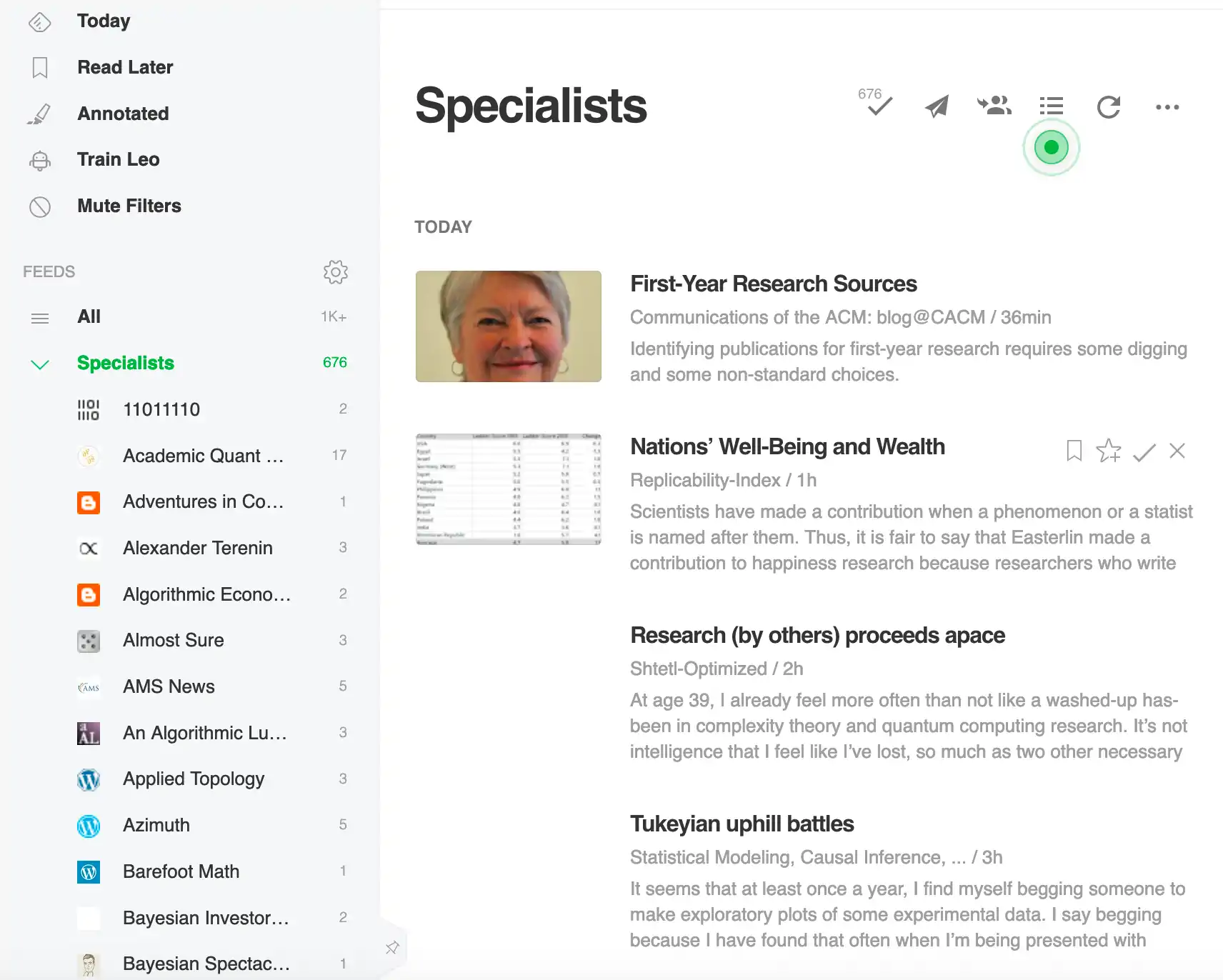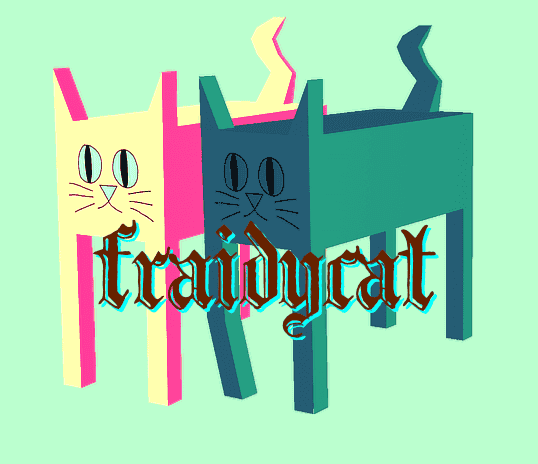Feed readers
Automated content aggregation for an internet designed to inform you rather than distract you
June 29, 2016 — February 2, 2025
Suspiciously similar content
Efficiently consuming and summarising news from around the world.
Remember feeds? When we thought the internet would give us timely, pertinent information on our topics of interest? When information streams weren’t about your aunt’s conspiracy theory memes on social media but curated lists of expert opinions?
No? Did you miss that part of internet discussion? Maybe a picture explains it better.
I’ve been told to use Twitter or Facebook for this, but… no. Those systems are designed to waste time with stupid distractions to benefit someone else. Facebook is informative in the same way thumb sucking is nourishing. Telling me to use someone’s social website to gain information is like telling me to play poker machines to fix my financial troubles. Stop that.
Contrarily, I want to find ways to summarise and condense information to save time for myself. That’s what feeds were designed for. New to this game? You know what podcasts are? Podcasts are a type of feed. An audio feed. If I care about news articles and Tumblr posts and not just audio, then I can still use feeds — feeds of text instead of audio. Any website can have a feed. Many do.
Remember when we thought the web would be a useful tool for researching and learning, and automated research assistants would trawl the web for us? RSS Feeds were often discussed as part of that machine: Little updates dripped from the web to be sliced, diced, prioritised and analysed by our software to keep us aware of… whatever.
Feeds as they are, despite being useful and time-saving, are not the peak of information retrieval. AFAICT they were always meant to be part of a larger infrastructure of automated knowledge classification and discovery and analysis, possibly involving community sharing and curating.
This higher-level analysis hasn’t happened, at least not as a technical standard. Most feed readers don’t do much fancy analysis or triage; they just give you a list of new items ordered by date. Many people make a living sifting feed wheat from feed chaff, which we call “journalism”. Services like Canopy or Pinterest or Keen that do automatic moderation might be useful, but it’s uncommon.
Still, feeds work and are much better than continually refreshing the same page.
Feeds are mourned and missing from certain modern blogs. Read Anil Dash on The lost infrastructure of social media.
Pace Anil, feeds are alive. Feeds are available for, for example, Medium, much as that site tries to distance itself from the normal web. Anil Dash’s Medium feed, for example, is https://medium.com/feed/@anildash.
In my field, feeds are more useful than ever. In academia, we are in various stages of the hype curve. Academics have belatedly caught on to feeds, leading to a golden age of specialist blogs. Perhaps because getting a PhD is a giant PITA, the barrier for entry to a blog seems trivial by comparison, so many PhD holders produce high-quality content. I think academics are enjoying the people in the machine phase.
Want to get started? Try the sources I use in my feed reader. They are all available on my blogroll.
Bonus reading:
- What is a feed? (a.k.a. RSS)
- Yair Rosenberg, It’s time to take back control of what we read on the internet — beginner’s guide to feeds as DIY internet
- see also indyweb
1 Feed discovery
- FeedLand: “The idea is to create a small creative community of people who love to share what they learn. We are not aiming to replace feed readers.”
- feedle—It’s a world of feeds!
2 Feed readers
How to get those feeds? An app! Either a web app, or an app like your grandaddy used to use.
2.1 Vivaldi
2.2 Fraidycat
Fraidycat is a desktop app or browser extension for Firefox or Chrome, with a remit to be an unapologetic passion project in an area dominated by SEO types. Has a novel UX design, by a novel piece of the internet, Kicks Condor.
I use it to follow people (hundreds) on whatever platform they choose - Twitter, a blog, YouTube, even on a public TiddlyWiki.
Open source.
On that UX thing,
There is no news feed. Rather than showing a massive inbox of new posts to sort through, you see a list of recently active individuals. No one can noisily take over this page, since every follow has a summary that takes up a mere two lines.
2.3 Feedly
Feedly is the current boss, and the one I use. Targets commercial users, like web “community managers” or marketing types, but it’s mostly usable despite that. Probably works for humans too. This is how you would subscribe to my site in Feedly. One annoyance: the internal feedback mechanism constantly asks me if an article is about “leadership” or not. The thought of combing the internet all day long to optimise efficiency for finding articles about leadership fills me with dread.
2.4 Newsblur
Newsblur is a quirky option that I used for a while before the interface annoyed me. Its user interface is stuck between radical UI redesign and a poor reimplementation of the corporate standard, but not everyone will agree.
The UI defies the last ten years of user interface conventions, which is confusing, but it works and is cheap (and has an open-source app you can self-host). This is how you would subscribe to my site in Newsblur
2.5 yarr
nkanaev/yarr: yet another rss reader
yarr (yet another rss reader) is a web-based feed aggregator that can be used both as a desktop application and a personal self-hosted server.
It is written in Go with the frontend in Vue.js. The storage is backed by SQLite.
2.6 Inoreader
Inoreader seems popular amongst readers of this blog. I have not used it myself, but thanks for all your custom, Inoreader users. Care to share why you like it?
2.7 Feeder
Feeder is a browser extension/site/app that reads feeds. I haven’t used it, but it brings a lot of traffic to this blog. Feeder fans, speak up!
2.8 The Old Reader
The Old Reader reads feeds and includes activity updates for people you follow on social media. Not sure if that’s the worst or best of all worlds. I presume the name is a tribute to its good technology despite the hype curve moving on to other things.
2.9 Feedbin
Feedbin is also a thing. Matt Webb recommends it because it has an easy email-to-feed gateway. USD5/month.
2.10 Bazqux
BazQux Reader (USD30/year) specialises in “no bullshit” branding and efficiency marketing for professional use.
2.11 Netnewswire
NetNewsWire: Free and Open Source RSS Reader for Mac and iOS
A feed reader syncs feed state via iCloud or Feedbin, Feedly, Inoreader, Newsblur, The Old Reader, Bazqux, Freshrss, and possibly other services.
Most people can stop reading here.
3 Doing things with feeds
3.1 RSS Bridge
A feed utility script that does lots of feed processing.
3.2 Generic web services
IFTTT, Zapier etc. can do things with feeds.
4 Plugging into the Fediverse
Very popular. Mastofeeder plugs RSS feeds into the Fediverse ecosystem.
This is a simple Mastodon/ActivityPub server that has a virtual
@website@mastofeeder.comuser for every RSS feed on the internet. Just search for your favourite RSS-enabled website from Mastodon’s search and follow the user! All RSS items will be posted as toots.
The other direction works too apparently see here.
4.1 Creating feeds from sites that don’t have them
Fraidycat does this for Twitter, Instagram, Reddit, SoundCloud, and Twitch. So does RSSbox for a slightly different selection of sites.
Feedity generates feeds from sites that don’t understand content aggregators.
More generally, web scraping tools can do this. For example, Scrapy with its companion project scrapy-rss to convert weird sites into RSS.
Newsletter/RSS gateway NewsletterHunt can help. For example, here’s Matt Levin’s Money Stuff.
5 Bonus time: DIY feed reader servers
If you want something more indy/private or dislike pre-packaged stuff, you can run your own feed reader server. I will run my own server software if the app is compelling enough, but let’s consider the costs. Let’s say between backups, security issues, and confusing DNS failures, it’s eight hours per year of miscellaneous computer wrangling, best case, and more hours if you have complicated things like running some multi-user enterprisey database to store data. It’s hard to imagine that cost being worth it for internet distraction.1
- FreshRSS, a free, self-hostable feeds aggregator is a long-lived and popular one, requiring no database. Dockerized or tarball install.
- Miniflux is open-source/DIY but also offers a hosted version for $15/year.
- Stringer looks like a nice little Ruby app but needs PostgreSQL. Bloat. ⚠️
- Selfoss is a PHP/SQLite self-hosted feed reader
- TinyTinyRSS is the original “minimalist” RSS reader; it still needs more databases than is sensible.
- Fever is a weird commercial (USD30) application that you host on your own server. It claims to learn your information preferences, which could be cool. But I can’t be bothered installing some database-heavy app with suspiciously antique language (PHP3) that also costs money to try, so I will never know.
Footnotes
Why people insist on running enterprise databases for apps like this is a mystery to me. The capacity to scale to many users is nice, I suppose, but by that logic, everyone should drive everywhere in a school bus.↩︎


